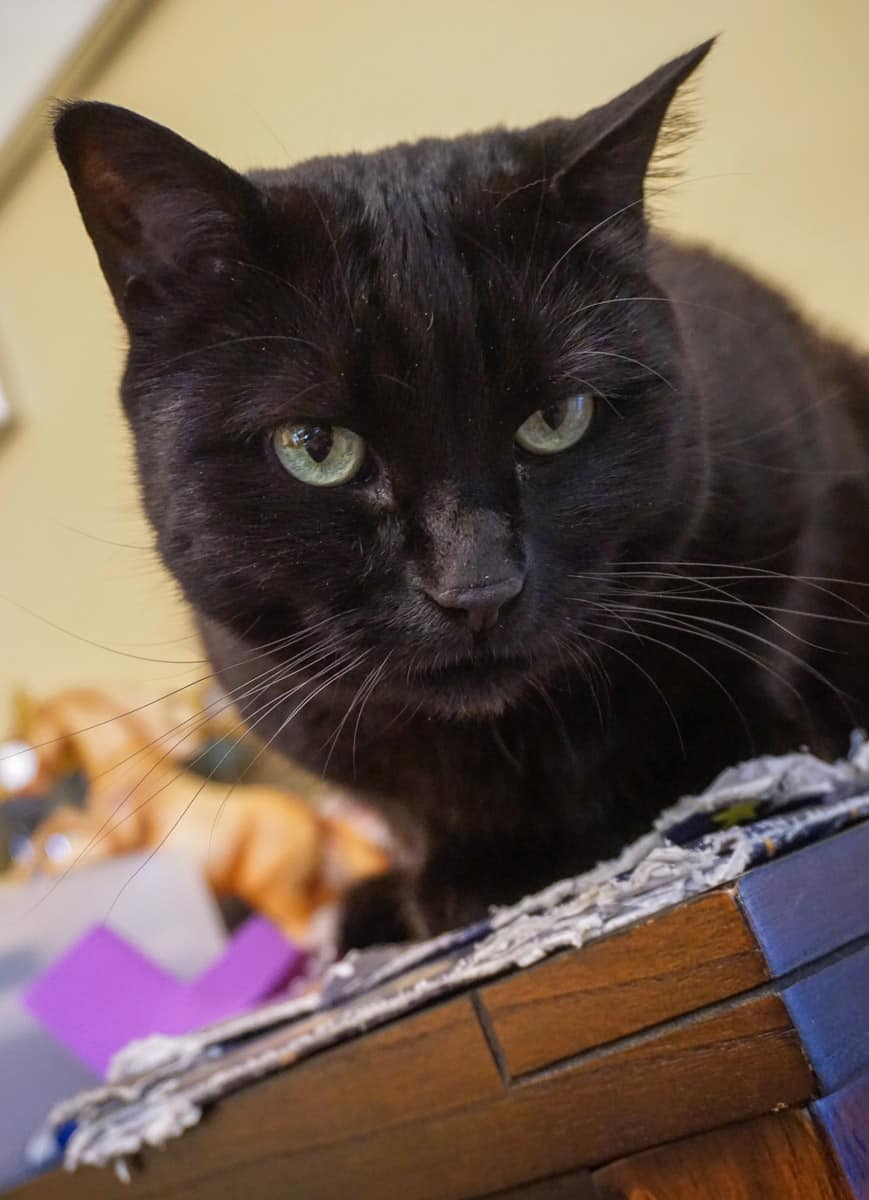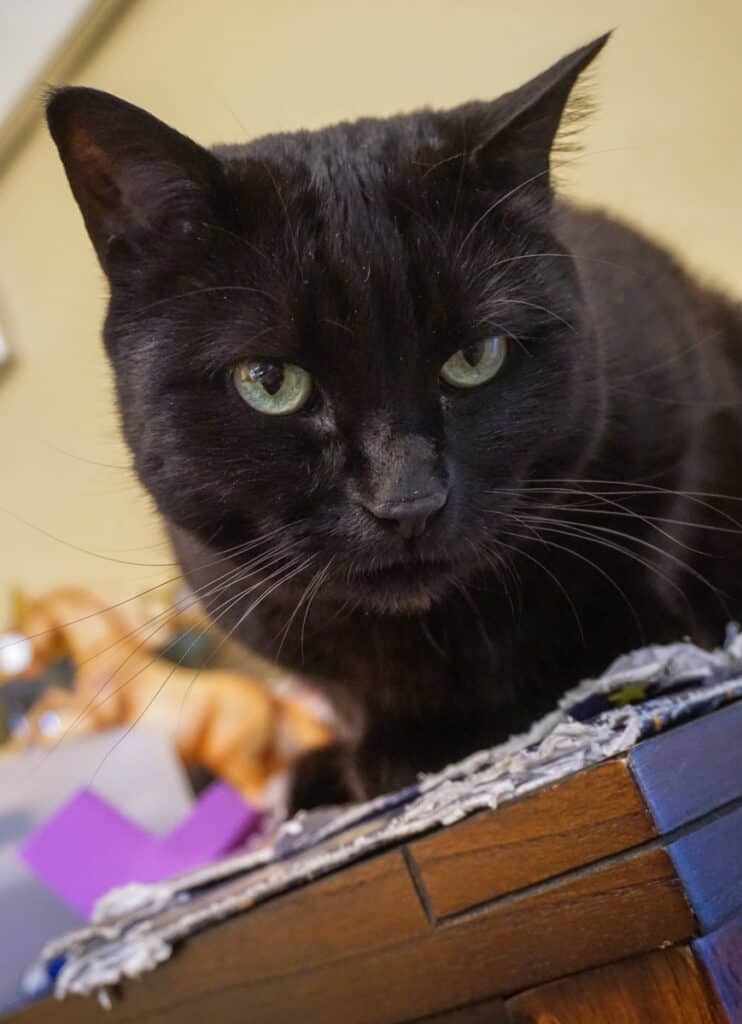My black cat loves to chew on cardboard and paper. Put a box out and it won’t be long before she decides to nibble on the edges.
My cat never eats the cardboard. Instead, she finds it amusing to simply rip the cardboard, flinging pieces everywhere with her mouth.
Chewing paper is fun for cats
The biggest reason why cats chew on cardboard is for the sheer fun of it. Some cats enjoy the process of shredding boxes and paper, especially if the cat is bored.
Your cat is curious
Your cat may be simply curious. Exploring their environment, which may include chewing on cardboard is a way for your cat to learn about their surroundings.
Chewing cardboard stimulates their prey drive
Once a prey is caught, cats like to rip and shred to remove the outer fur or feathers. Ripping and chewing on cardboard lets your cat go through a similar process albeit in a more fun and less gruesome way.

Your kitten may be teething
Just like infants, kittens go through a teething phase as they lose their kitten teeth and grow adult teeth. Their gums may be sore from erupting teeth and will seek out objects to chew on for relief. You can help your kitten through their growing pains by providing soft wet cat food to eat and soft chew toys.

Your cats gums may be sore
Adults cats no longer have teething pain but they can develop dental issues. If your cat has a sore tooth or gums, they may resort to chewing on objects like cardboard to relieve the pain.
If you suspect your cat may have soreness driving their need to chew cardboard, make sure to speak with your vet for an examination and potential treatments.
Your cat may have anxiety
Your cat may seek to self-soothe by chewing on cardboard if they are experiencing a high level of stress or anxiety.
Your cat may be bored
Cats may also chew on cardboard out of boredom or as a way to relieve stress. If a cat is not getting enough stimulation or is feeling anxious, they may engage in behaviors such as chewing on cardboard to help relieve these feelings.
Your cat may be exhibiting pica
Pica is the chewing or eating of non-nutritional substances. Cats who exhibit pica have been documented as chewing on substances such as wool, shoe laces, cotton, as well as cardboard. [1]
Researchers aren’t sure what the exact reasons for why some cats will exhibit pica. [2] The onset of pica most frequently occurs when the cats is between 6 and 18 months of age. While cats with pica have higher occurrences of self-sucking, researchers believe that early weaning is not a causative factor for pica.
Consult a vet to see about addressing pica in your cat if you are concerned about their behavior. Eating cardboard and paper can cause gastrointestinal distress in cats so it’s important to have your cat examined if they ingest these materials.
Divert your cats attention with toys and comfortable spaces
To eliminate cardboard and paper chewing the first step is to remove access to these products. Place cardboard and paper of out of the reach of your cat so they aren’t tempted.
Provide plenty of active play sessions every day with your cat.
Your cat needs and craves your attention and playing with them is a great way to meet their emotional and mental needs and to prevent boredom. Offer cat trees and fun toys for a more enriching environment.
Make sure your house has plenty of quiet resting places for your cat to retreat to when they need some downtime. This will help reduce anxiety in your cat and lets them know that they can have alone time when they need it.
References
[1] Bradshaw, J. W., Neville, P. F., & Sawyer, D. (1997). Factors affecting pica in the domestic cat. Applied Animal Behaviour Science, 52(3-4), 373-379. https://doi.org/10.1016/S0168-1591(96)01136-7
[2] Demontigny-Bédard, I., Beauchamp, G., Bélanger, M. C., & Frank, D. (2016). Characterization of pica and chewing behaviors in privately owned cats: a case-control study. Journal of feline medicine and surgery, 18(8), 652-657. https://doi.org/10.1177/1098612X15591589







